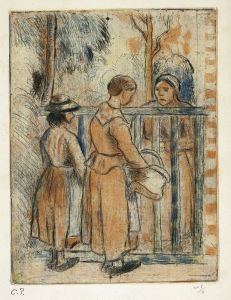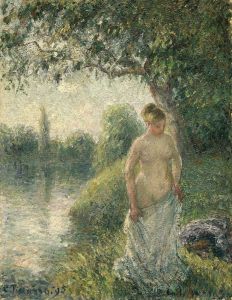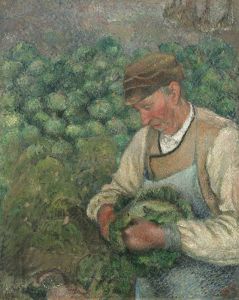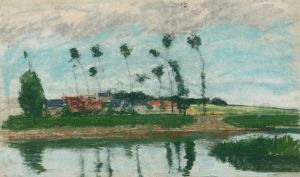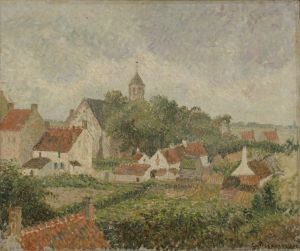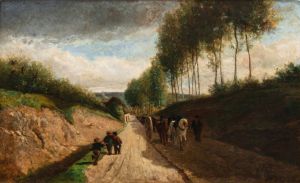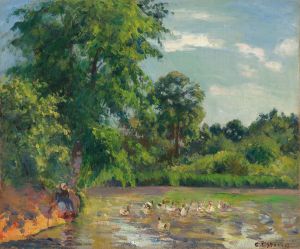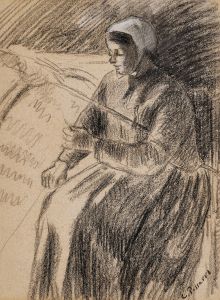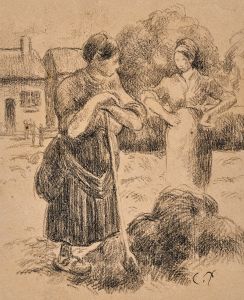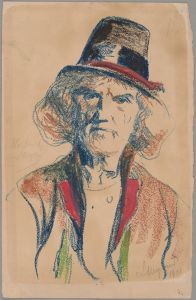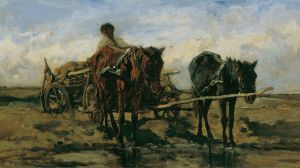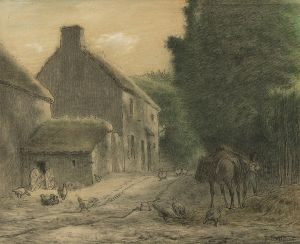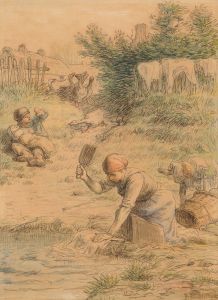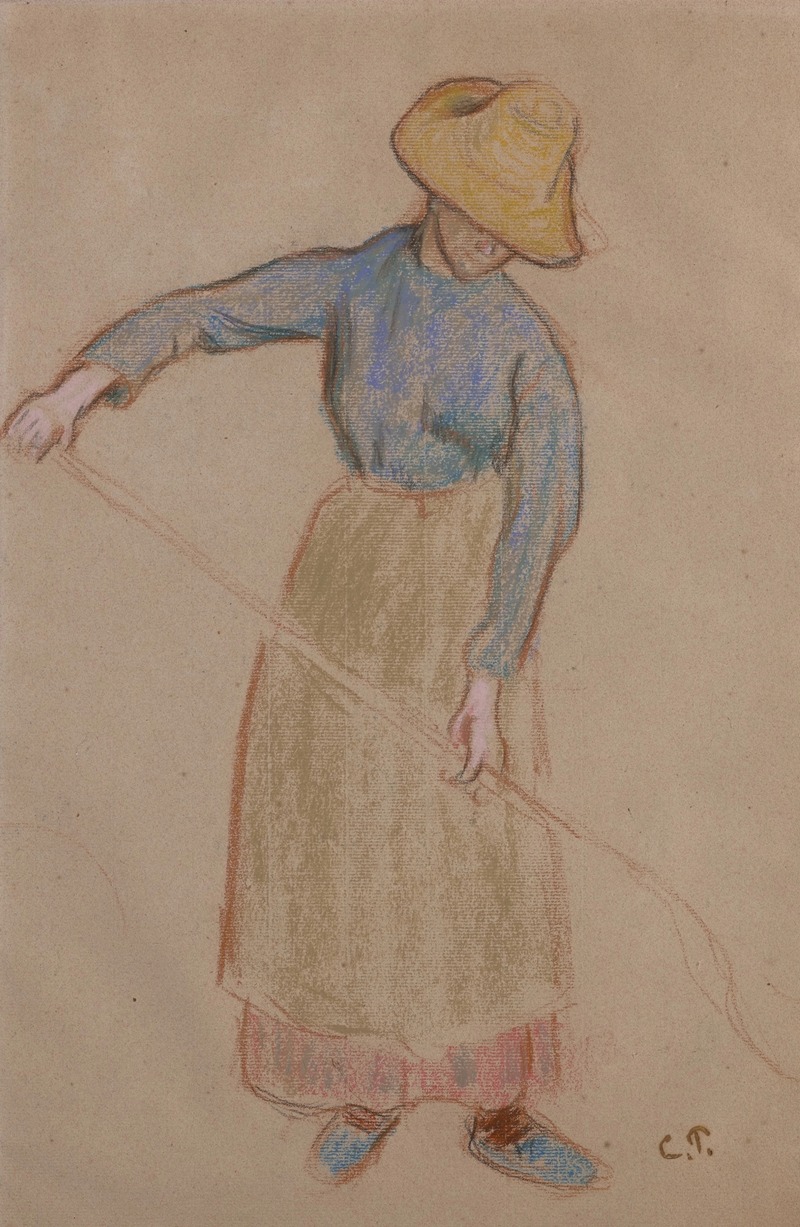
Paysanne à la fourche
A hand-painted replica of Camille Pissarro’s masterpiece Paysanne à la fourche, meticulously crafted by professional artists to capture the true essence of the original. Each piece is created with museum-quality canvas and rare mineral pigments, carefully painted by experienced artists with delicate brushstrokes and rich, layered colors to perfectly recreate the texture of the original artwork. Unlike machine-printed reproductions, this hand-painted version brings the painting to life, infused with the artist’s emotions and skill in every stroke. Whether for personal collection or home decoration, it instantly elevates the artistic atmosphere of any space.
"Paysanne à la fourche" is a painting by the renowned French artist Camille Pissarro, a pivotal figure in the Impressionist movement. Born on July 10, 1830, in St. Thomas, in the Danish West Indies, Pissarro moved to Paris in 1855, where he became an integral part of the Impressionist circle. His works are celebrated for their depictions of rural life and landscapes, capturing the essence of the French countryside with a unique sensitivity to light and atmosphere.
"Paysanne à la fourche," which translates to "Peasant Woman with a Pitchfork," exemplifies Pissarro's dedication to portraying the rural working class with dignity and realism. This painting is part of his broader exploration of agrarian themes, reflecting his interest in the lives and labors of peasants. Pissarro's commitment to these subjects was not merely artistic but also ideological, as he was known for his anarchist beliefs and his sympathy towards the working class.
The painting features a peasant woman standing in a field, holding a pitchfork. Pissarro's use of color and brushwork in this piece is characteristic of his Impressionist style, where he employs loose, expressive strokes to capture the transient effects of light and atmosphere. The palette is typically muted, with earthy tones that reflect the natural environment and the simplicity of rural life. The composition is balanced, with the figure of the woman centrally placed, drawing the viewer's attention to her presence and the task at hand.
Pissarro's technique often involved painting en plein air, or outdoors, which allowed him to observe and render the natural world with immediacy and authenticity. This approach is evident in "Paysanne à la fourche," where the interplay of light and shadow on the woman's figure and the surrounding landscape suggests a specific time of day and atmospheric conditions.
Throughout his career, Pissarro was a mentor to several other Impressionist and Post-Impressionist artists, including Paul Cézanne, Paul Gauguin, and Vincent van Gogh. His influence extended beyond his own works, as he encouraged these artists to explore new techniques and perspectives. Pissarro's dedication to innovation and his collaborative spirit were instrumental in the development and success of the Impressionist movement.
"Paysanne à la fourche" is a testament to Pissarro's enduring interest in the themes of labor and nature. It reflects his belief in the importance of depicting everyday life with honesty and empathy. The painting is not only a representation of a moment in time but also an expression of Pissarro's broader social and artistic ideals.
Today, Camille Pissarro's works are held in high esteem and can be found in major museums and collections worldwide. "Paysanne à la fourche," like many of his paintings, continues to be appreciated for its artistic merit and its insightful portrayal of rural life during the late 19th century. Through his art, Pissarro offers a window into the world of the past, inviting viewers to consider the beauty and complexity of the lives of ordinary people.





